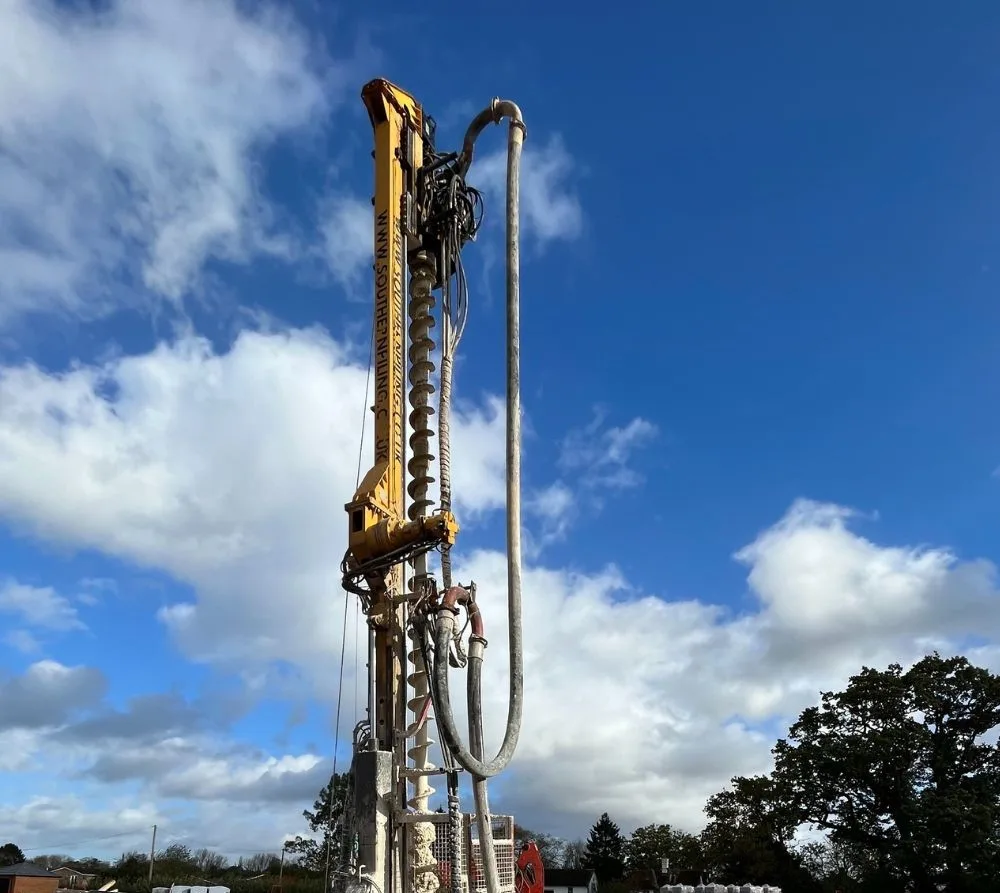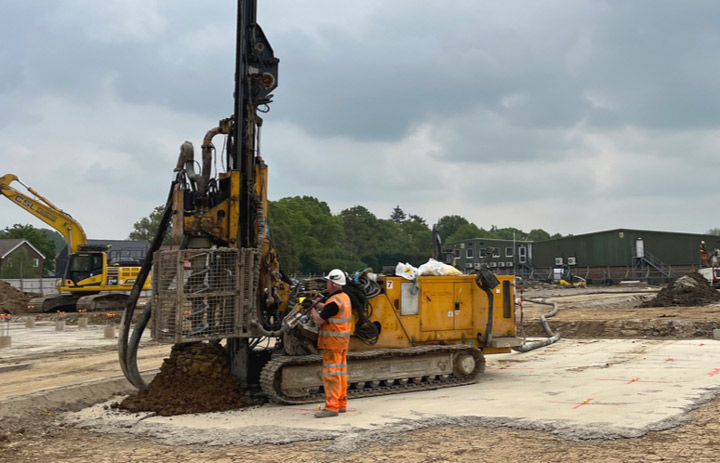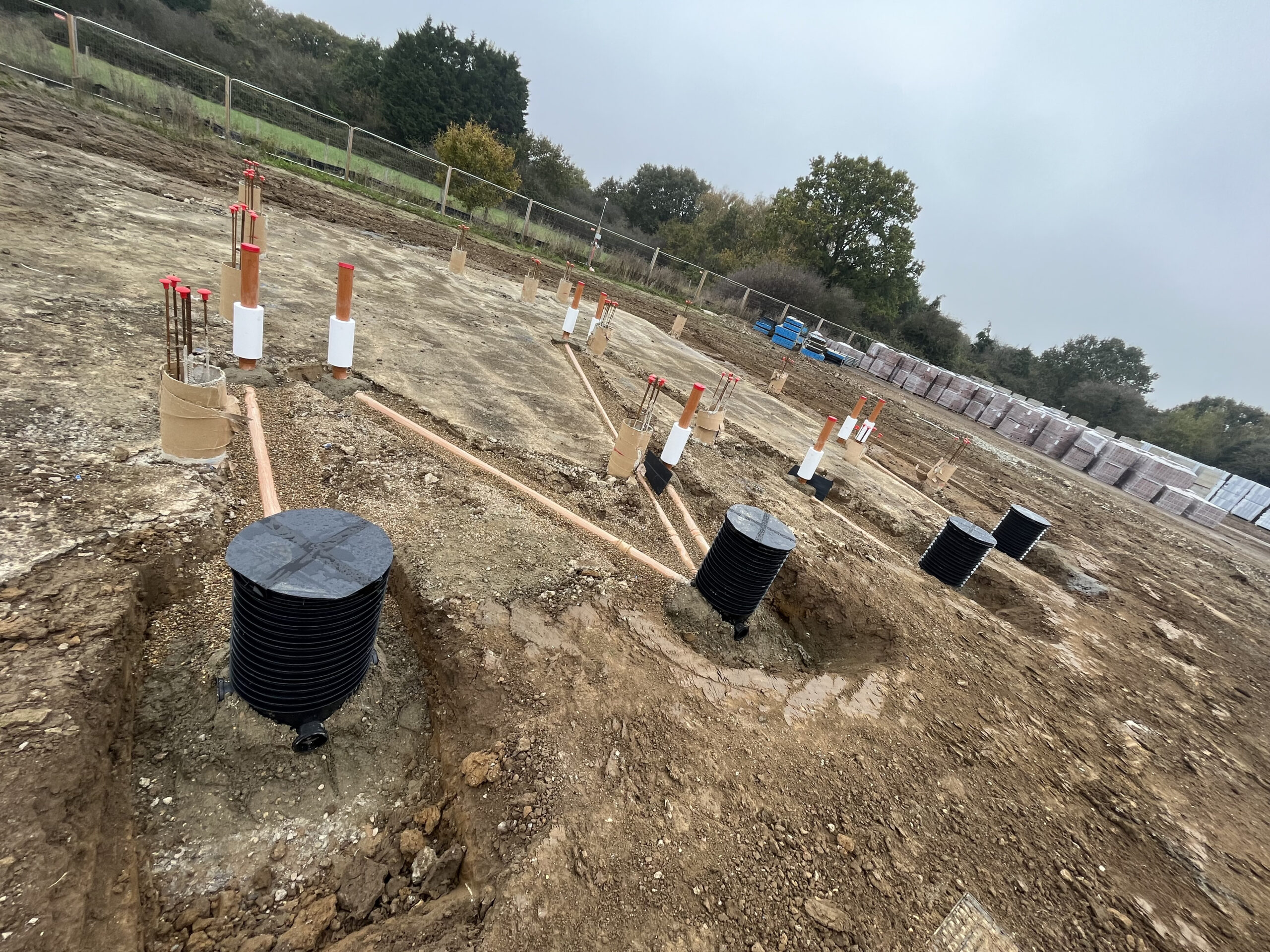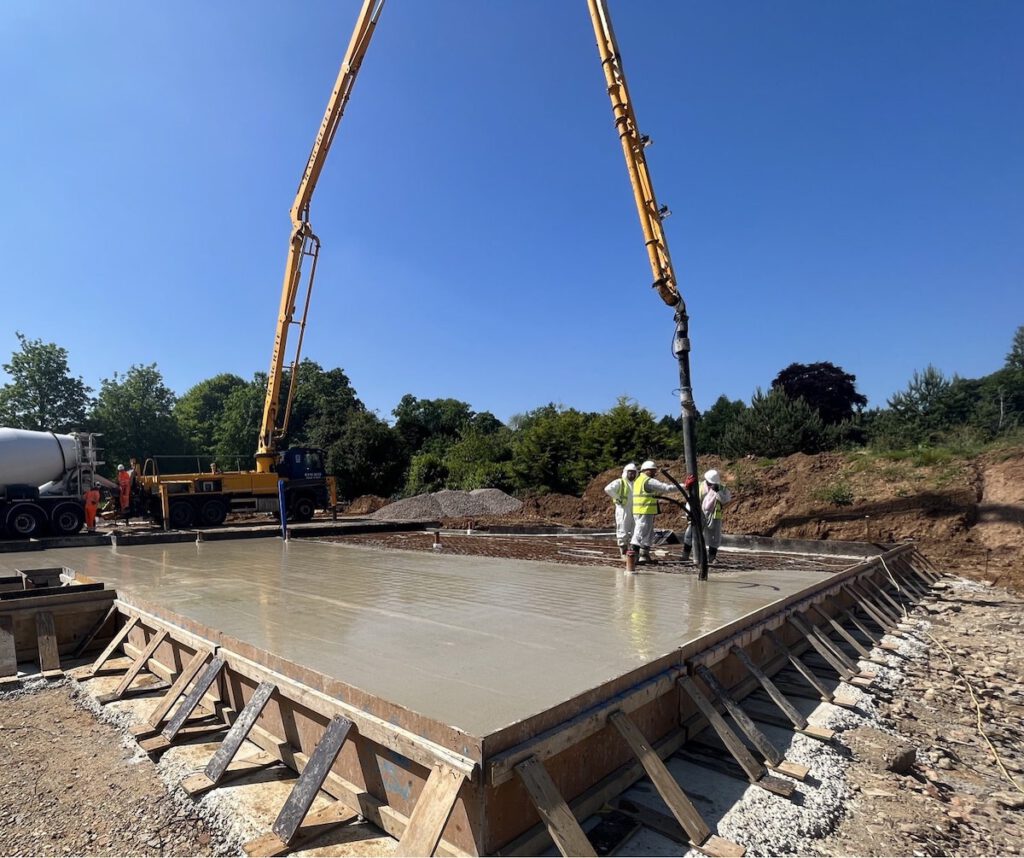Piling & Alternatives
Piling is a cornerstone of constructing deep foundations. By driving piles deep into the ground, additional support can bear the weight of the structure. SPEEDECK’s expertise shines particularly in areas where the ground is soft or unstable, and where a conventional foundation is impractical. By strategically optimising piling across our foundation schemes, we deliver unparalleled results.
SPEEDECK use a targeted approach to gathering data, comprehensive analysis of geological maps, and the creation of a detailed ground model to gain valuable insights that enhance the value of foundation construction projects significantly.
Types of Piling and Alternatives
The majority of piles used with our piled raft foundations are constructed using small Sectional Flight Auger (SFA) piling rigs. These produce the same pile type as a Continuous Flight Auger (CFA) rig but use smaller, more lightweight equipment. This piling method is fast, cost-effective, and suitable for the majority of ground types encountered within our area of operations.

Sectional Flight Auger (SFA) Piling
SFA piling involves using a sectional flight auger, which is a type of drill with segmented flights that are added in sections as the pile is drilled deeper into the ground.
This method is particularly advantageous in constrained or urban environments where space is limited, and the use of smaller, more manageable equipment is essential.
Key Characteristics of SFA Piling:
- Modular: The auger is assembled in sections, allowing for flexibility in the depth of piles without needing excessively tall rigs.
- Lightweight Equipment: The smaller rigs are easier to transport and manoeuvre, reducing the need for heavy machinery and minimising disruption on-site.
- Versatility: Suitable for a range of soil conditions, including cohesive (soils containing clay or silt) and non-cohesive soils (soils containing sand or gravel).
- Efficiency: The process is relatively fast, leading to shorter construction times and lower overall costs.
- Minimal Vibration: This method generates less vibration compared to traditional piling methods, making it ideal for sensitive sites close to existing structures.

Continuous Flight Auger (CFA) Piling
CFA piling uses a continuous flight auger, which is a single, long auger that is drilled into the ground in one continuous operation to form a pile. This method is widely used in various construction projects due to its efficiency and effectiveness.
Key Characteristics of CFA Piling:
- Continuous Process: The auger is drilled into the ground in one continuous motion, without the need to add sections. This can lead to faster installation times.
- Stability: The soil removed during drilling stays on the flights, providing support to the borehole and minimising the risk of collapse.
- Versatility: Effective in a range of soil types, including loose and water-bearing soils.
- Cost-Effective: The continuous process reduces labour and time, translating to cost savings.
- Reduced Noise and Vibration: Like SFA, CFA piling produces less noise and vibration, which is beneficial in urban areas and sensitive environments.

A Comparison of SFA and CFA Piling
Both SFA and CFA piling methods produce similar types of piles, suitable for supporting structures in various soil conditions. However, SFA piling rigs offer a specific advantage in terms of equipment size and flexibility. The smaller, lightweight rigs are particularly well-suited to the diverse and sometimes restricted sites which require foundations.
The continuous nature of CFA piling not only enhances efficiency but also minimises the potential for soil displacement and collapse, resulting in a quicker and more stable foundation construction compared to traditional methods that require multiple steps or components.
Both allow us to maintain the high standards of speed, efficiency, and cost-effectiveness our client’s projects require, ensuring that we can deliver reliable and robust foundations in a variety of ground conditions.

Alternative Piling Options
In some cases, alternative piling methods may be more appropriate depending on the specific ground conditions and project requirements. For instance, in extremely soft soils, precast concrete driven piles are often more practical and can be just as effective in our foundation solutions. These methods provide flexibility and adaptability to address various soil types and project needs.

Lightweight piling rigs
Since the piling rigs we commonly use are lightweight, a piling mat and temporary haul roads are usually not required, providing a further saving over traditional piled foundations. The rigs can also move around site more easily, especially where there are changes in levels.

Driven Piles
Driven piles are a type of deep foundation installed by driving prefabricated piles into the ground using a pile driver.
This method is highly effective in certain soil conditions and offers several advantages. There are different types of driven piles, including precast concrete-driven piles, which are manufactured off-site and driven into the ground to compact the surrounding soil and increase load-bearing capacity. Steel H-piles, another type, are used for their high load-bearing capacity in both cohesive and non-cohesive soils. Timber piles, though less common in modern construction, are still used for specific applications such as temporary works or light structures.

Optimising Piling Solutions
We identify the optimal piling solution following a detailed review of the ground conditions and the specific needs of the project. This process involves conducting thorough soil investigations, assessing the load-bearing requirements, and evaluating environmental factors like noise and vibration. Additionally, we balance cost-effectiveness with performance to ensure the project stays within budget while achieving high-quality and durable foundations. By considering these factors, we ensure that the chosen piling method is the most appropriate and effective for each specific project, leading to safe, reliable, and efficient foundation solutions.

Construction
Piling is part of our construction solution

Concrete Working Platforms
Our concrete working surface eliminates the need for expensive temporary piling mats…

Piling & Alternatives
Our piling methods, along with piling alternatives…

Groundworks and Specialisms
Groundwork activities undertaken; site enabling, drainage and services…

Reinforced Concrete Foundations
Reinforced concrete works for substructures…

Piled Raft Foundations
Reinforced concrete works for substructures…






